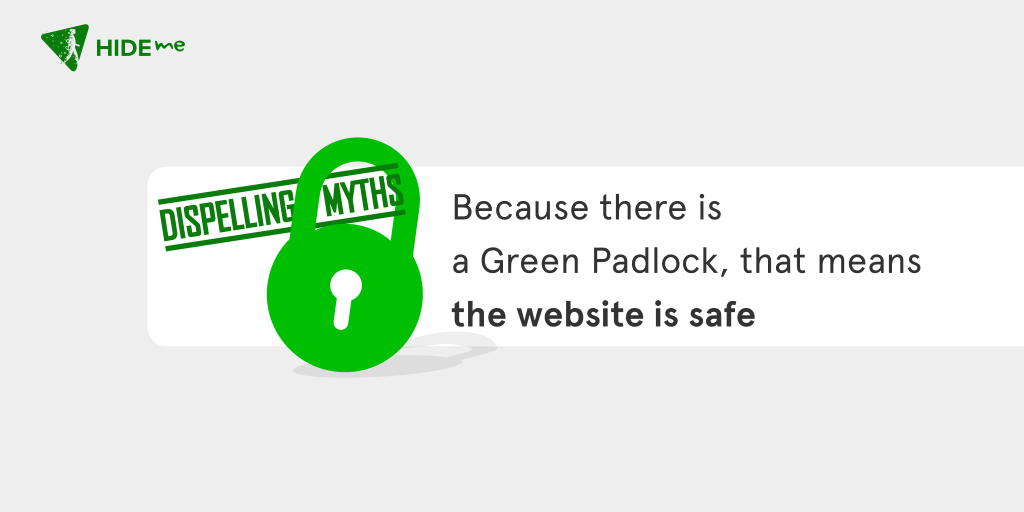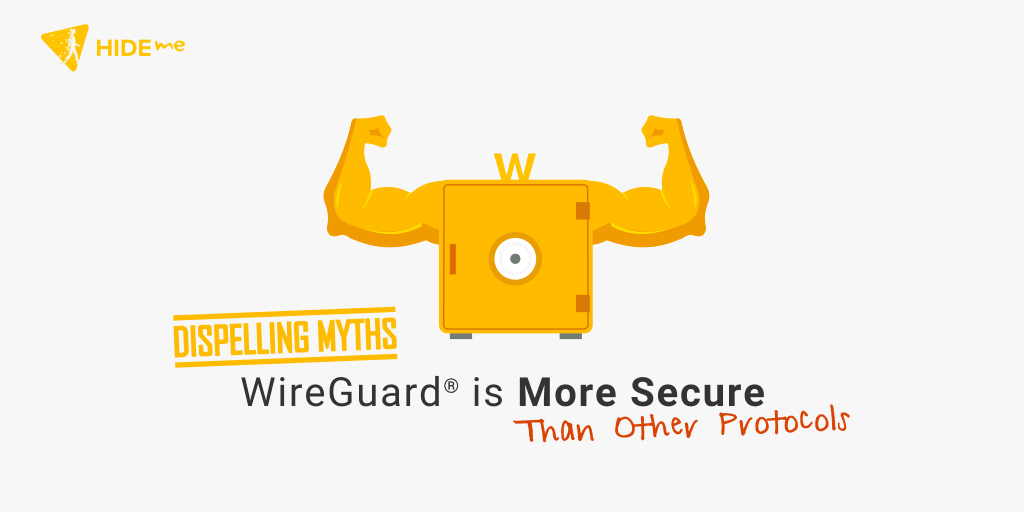قبلاً اینگونه بود که "قفل سبز" به عنوان نشانه ای برای اعتماد به یک وب سایت دیده می شد. اما امروزه لزوماً اینگونه نیست. کلاهبرداران همیشه در حال پیشرفت سریع هستند و یکی از این راه هایی که آنها سعی کرده اند مردم را فریب دهند ، استفاده از این خرد متعارف به عنوان راهی است که باعث می شود افراد اطلاعات شخصی خود را تحویل دهند. [19659000] و با جمعه سیاه و دوشنبه سایبری ، شناخت آخرین کلاهبرداری بیش از هر زمان دیگری مهم است.
"قفل سبز" چیست؟
چند وقت پیش قفل سبز معرفی شد تا نشان دهد وب سایت از HTTPS استفاده می کند. این بدان معنی است که هر اطلاعاتی که در آن وب سایت وارد می کنید خصوصی و رمزگذاری شده است و فقط وب سایت می تواند به آن اطلاعات دسترسی پیدا کند. اگر اکنون به بالای مرورگر وب خود ، در نوار آدرس نگاه کنید ، باید قفل سبز را مشاهده کنید. این نشان می دهد VPN hide.me در وب سایت ما از HTTPS استفاده می کند. این بدان معنی است که هر اطلاعاتی که در وب سایت ما وارد می کنید بی خطر است.
HTTPS قطعاً همان چیزی است که باید قبل از استفاده از وب سایت به دنبال آن باشید ، و به خصوص اگر چیزی را خریداری می کنید. اما همه چیز در مورد امنیت آنلاین شما نیست.
هرکسی می تواند HTTPS را راه اندازی کند
هر اپراتور وب سایتی توانایی راه اندازی HTTPS و دریافت گواهی را دارد. در حالی که بسیاری از مراجع صدور گواهینامه در صورت جعل وب سایت ، گواهینامه های HTTPS را می کشند. بسیاری از آنجا وجود دارد که به طرف دیگر نگاه می کنند. و اینجاست که کلاهبرداران برای دریافت گواهینامه های خود برای پیاده سازی HTTPS می روند.
کلاهبرداران اکنون از HTTPS به عنوان راهی برای فریب کاربران برای تصور قانونی بودن یک وب سایت استفاده می کنند. قفل سبز تا حدودی بسیاری از ما را مشروط کرده است که فکر کنیم این مهر و موم اصالت است ، اما این نمی تواند دور از حقیقت باشد.
این واقعیت که اطلاعاتی که شما تحویل می دهید رمزگذاری شده است ، تفاوتی نمی کند زیرا شما هنوز این اطلاعات را به کلاهبرداران می دهید. به همین دلیل از اهمیت حیاتی برخوردار است که شما قبل از تحویل هرگونه اطلاعات بیشتر ، بیشتر تحقیق کنید.
برای جلوگیری از کلاهبرداری به دنبال چه مواردی باشید
بسیاری از کلاهبرداران اکنون از HTTPS به عنوان راهی برای ایجاد کپی جعلی از خرده فروشان بزرگ مانند آمازون استفاده می کنند. اما می توانید با بررسی گواهی ، قانونی بودن وب سایتی که در آن هستید را بررسی کنید. فقط می توانید روی قفل کلیک کنید و به شما در مورد گواهی نامه می گوید. شما اطلاعاتی از جمله اینکه برای چه کسی صادر شده است ، توسط چه کسی صادر شده است و چه موقع گواهی معتبر است.
اطمینان حاصل کنید که این اطلاعات با وب سایتی که در آن هستید مطابقت دارد. و اگر مطمئن نیستید ، بهتر است از آن اجتناب کنید. خصوصاً اگر پیوندهای ایمیل را دنبال می کنید. برای جلوگیری از اقدام به فیشینگ ، باید خودتان مستقیماً به وب سایت بروید.
همچنین فقط به دنبال هدایای عمومی باشید که چیزی جعلی است. مانند اشتباهات املایی ، اشکال عجیب در قالب ، تصاویر / پیوندهای خراب و غیره
از VPN استفاده کنید!
اگر وب سایتی وجود دارد که از آن مطمئن نیستید ، همیشه می توانید از VPN برای پنهان کردن آدرس IP واقعی خود استفاده کنید. در صورت تحویل اطلاعات این کار باعث صرفه جویی در شما نمی شود ، اما در سایتی که از وب سایتی مطمئن نیستید ، به شما یک لایه امنیتی دیگر می بخشد.
فروش CyberWeek ما هم اکنون نیز انجام شده است ، بنابراین می توانید امنیت پیشرو در صنعت خود را فقط با 39.95 دلار / 39.99 یورو / 39.99 پوند بدست آورید! که فقط با 3.33 دلار در ماه کار می کند! اگر قصد دارید این جمعه سیاه و دوشنبه سایبری را بخرید ، VPN ابزاری ضروری است.
اکنون بخرید
همچنین 30 روز ضمانت بازگشت پول وجود دارد ، بنابراین می توانید خدمات ما را امتحان کنید. و اگر به هر دلیلی راضی نیستید ، می توانید پول خود را پس بگیرید. فقط با پشتیبانی 24/7 ما صحبت کنید تا در صورت نیاز از آن کمک بگیرید. با آنها می توانید از طریق ایمیل در [email protected] یا از طریق چت زنده تماس بگیرید.
There is a lot of misinformation surrounding WireGuard, so we are continuing to dispel those myths as best we can. In this entry, we are looking at the idea that WireGuard actually supports many different encryption and authentication methods. When in reality, it is a lot more limited than that. Whilst the vast majority of other VPN protocols have support for a wide range of cryptosystems, WireGuard is a bit simpler. It only supports one key agreement scheme (Curve25519), and only one AEAD (authenticated encryption with associated data), ChaCha20-Poly1305. In contrast to WireGuard IPSec supports RSA, DSA, ECDSA, Curve25519 and a plethora of other algorithms. Before we start explaining what’s exactly beneath the hood we need to emphasize an important distinction between WireGuard and other well-known protocols. WireGuard is a peer-to-peer protocol. It does not distinguish between server nodes and client nodes nor is there any special functionality assigned to a peer as a consequence of a peer’s role. Roles, such as a server or a client, are a deployment detail and WireGuard does not care about such details. But, for easier understanding, we’ll address the hide.me peer as a “server” and the customer’s device as a “client”. As with any other asymmetric cryptosystem peers need to authenticate each other before a symmetric session key gets established. The only possible authentication mechanism that WireGuard supports is public key authentication. Other protocols, such as IKEv2 or OpenVPN support username and password authentication, but WireGuard doesn’t. With WireGuard the public keys serve as an authentication material, as a base for key agreement and as a crypto-key routing foundation. In general, if a peer Alice wishes to prove its identity to some other peer Bob she’ll use her private key to digitally sign some sort of a message. Such a digital signature can be verified by Bob to be authentic, but only if Bob already possesses Alice’s public key. So, Bob needs to get hold of Alice’s public key somehow and in advance. WireGuard does not provide a facility for such a key exchange, it is stealthy, the public keys need to be set up in advance. If the public key of a peer is not known WireGuard keeps silent. In contrast to WireGuard, TLS, the dominant security protocol, during its handshake provides the server’s public key to the client in the form of a certificate. On hide.me we combined the two. We use HTTPS to establish a short-lived, authenticated and highly secure channel in order to exchange public keys. The customer’s public key will be used then for the WireGuard session which is about to start. Our apps generate fresh private and public key pair on each connection attempt. Once the server’s and customer’s public keys are in place WireGuard has all the tools it needs to establish a session key over a Curve25519 key agreement scheme. Such a session key is then used by the symmetric ChaCha20-Poly1305 AEAD for the data transfer between the peers. ChaCha20-Poly1305 is an AEAD (authenticated encryption with associated data), basically a good combination of a cipher (ChaCha20) and a message authentication code (Poly1305). An AEAD not only encrypts the sensitive data, it authenticates it too (AE part). In addition to the sensitive data other, non-sensitive, data may be included in the final message which gets authenticated as well (AD part). AEADs provide all the three pillars of security: Confidentiality, integrity and authenticity of the data. Nowadays the dominant AEAD is AES-GCM. It is a construction which consists of the AES-CTR (AES in counter mode) and a GHASH MAC. It is highly secure and has no known vulnerabilities, but it is computationally expensive on platforms other than recent Intel processors. AES is cryptographically stronger than ChaCha20, but it is a lot more taxing. So, it is thought that ChaCha20 is a good “bang-for-your-buck” option when compared to AES, especially on mobile platforms. Before the advent of ChaCha20-Poly1305 there was no alternative to AES-GCM. Depending on a single AEAD was not an option for large enterprises. What would have happened if a critical vulnerability were to be discovered in AES-GCM? The industry has an alternative now, even if it is not as strong or as fast as AES-GCM it is still a viable option if the AES-GCM fails.
Dispelling Myths: WireGuard® Is More Secure Than Other Protocols

Which encryption does WireGuard support
How WireGuard differs from other protocols
WireGuard authentication explained
How hide.me’s WireGuard authentication works
ChaCha20-Poly1305 explained
What’s the verdict